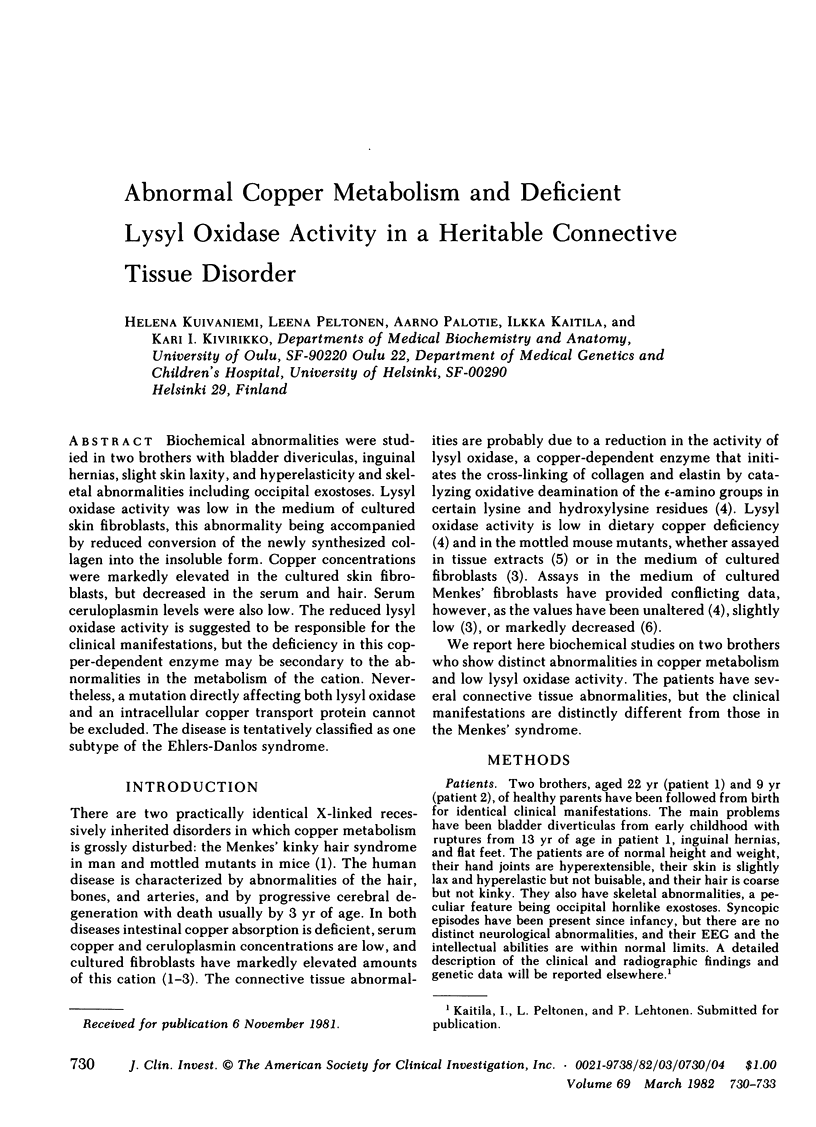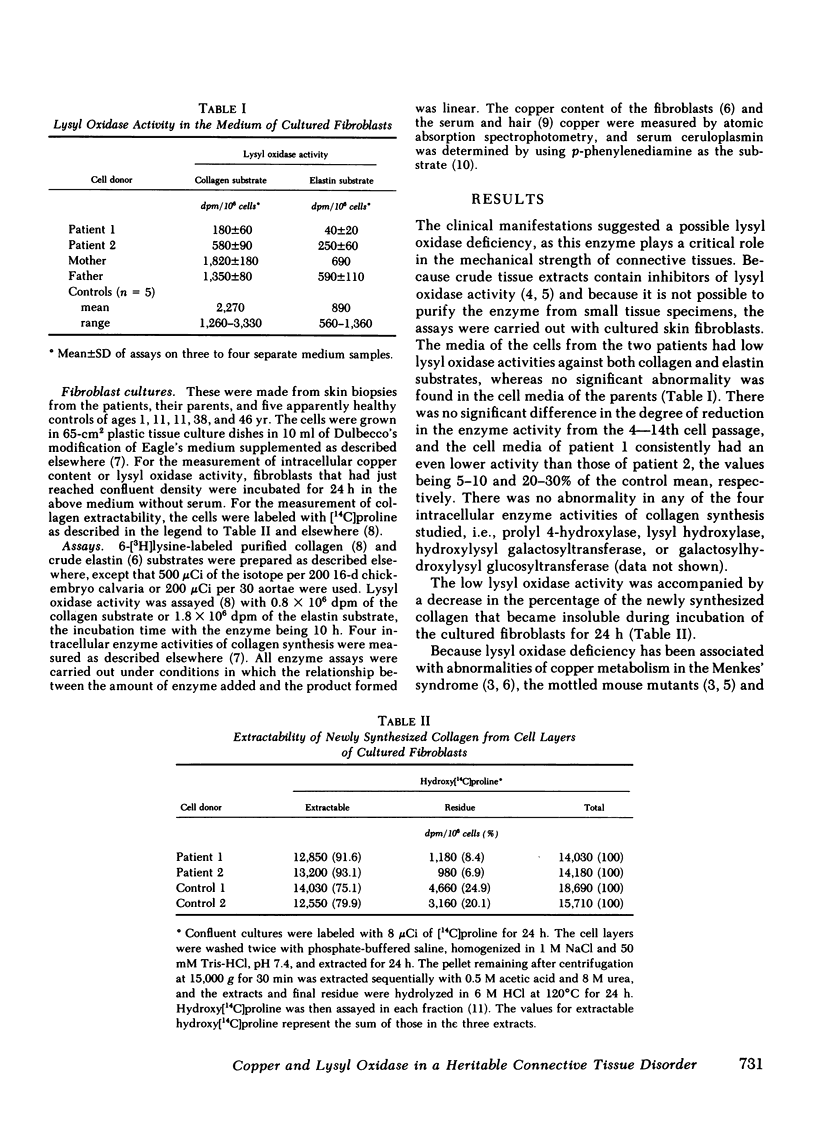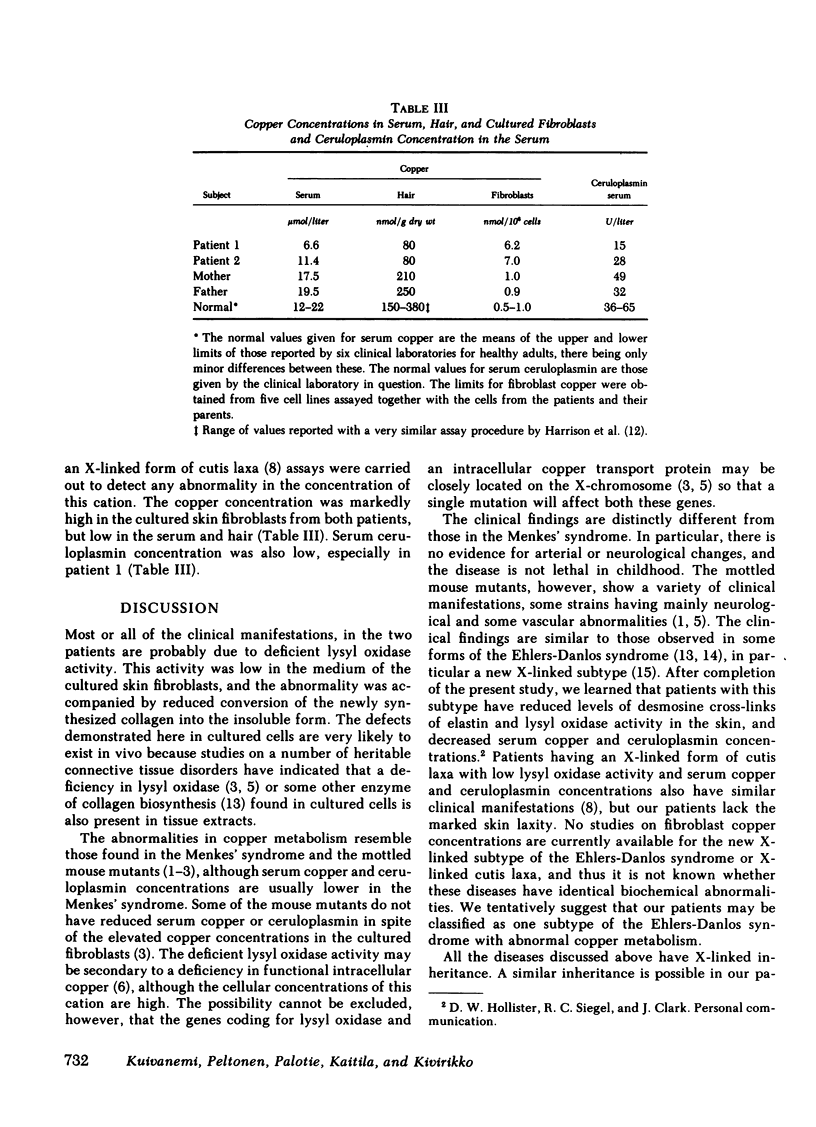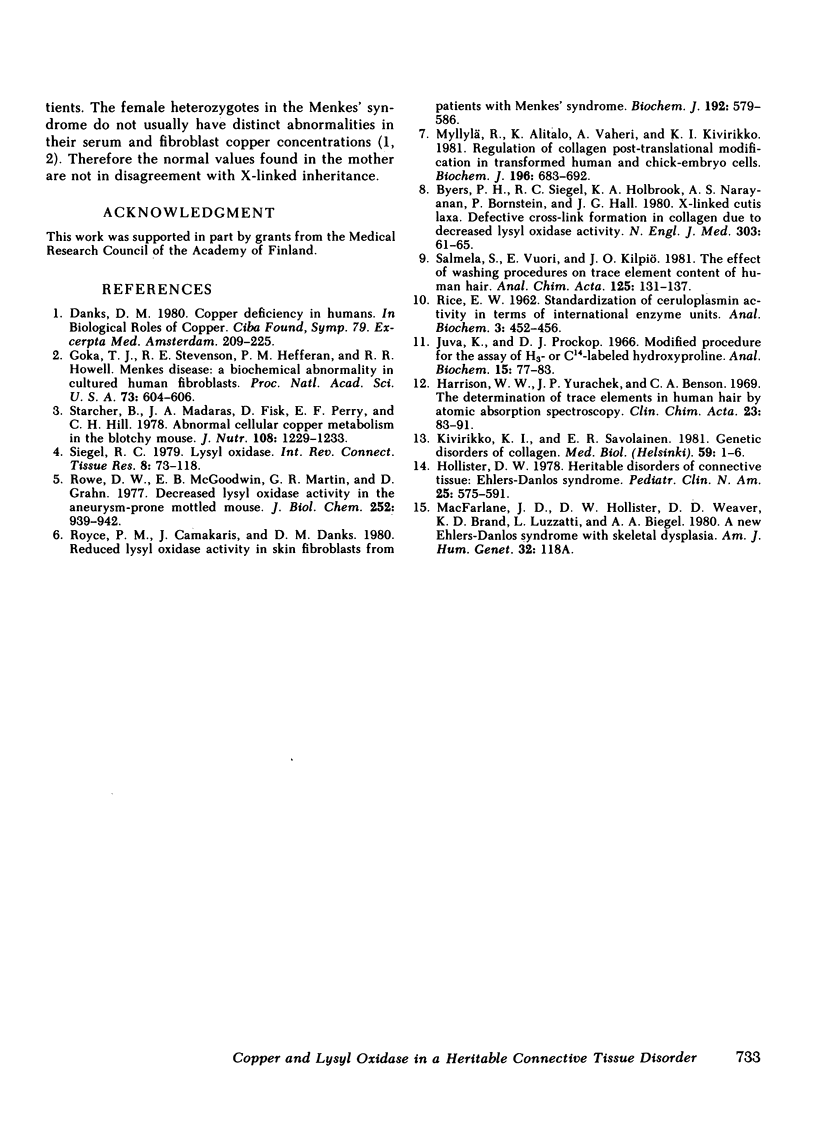Abstract
Biochemical abnormalities were studied in two brothers with bladder divericulas, inguinal hernias, slight skin laxity, and hyperelasticity and skeletal abnormalities including occipital exostoses. Lysyl oxidase activity was low in the medium of cultured skin fibroblasts, this abnormality being accompanied by reduced conversion of the newly synthesized collagen into the soluble form. Copper concentrations were markedly elevated in the cultured skin fibroblasts, but decreased in the serum and hair. Serum cerulophasmin levels were also low. The reduced lysyl oxidase activity is suggested to be responsible for ther clinical manifestations, but the deficiency in this copper-dependent enzyme may be secondary to the abnormalities in the metabolism of the cation. Nevertheless, a mutation directly affecting both lysyl oxidase and an intracellular copper transport protein cannot be excluded. The disease is tentatively classified as one subtype of the Ehlers-Danlos syndrome.
Full text
PDF



Selected References
These references are in PubMed. This may not be the complete list of references from this article.
- Byers P. H., Siegel R. C., Holbrook K. A., Narayanan A. S., Bornstein P., Hall J. G. X-linked cutis laxa: defective cross-link formation in collagen due to decreased lysyl oxidase activity. N Engl J Med. 1980 Jul 10;303(2):61–65. doi: 10.1056/NEJM198007103030201. [DOI] [PubMed] [Google Scholar]
- Harrison W. W., Yurachek J. P., Benson C. A. The determination of trace elements in human hair by atomic absorption spectroscopy. Clin Chim Acta. 1969 Jan;23(1):83–91. doi: 10.1016/0009-8981(69)90014-x. [DOI] [PubMed] [Google Scholar]
- Hollister D. W. Heritable disorders of connective tissue: Ehlers-Danlos syndrome. Pediatr Clin North Am. 1978 Aug;25(3):575–591. doi: 10.1016/s0031-3955(16)33605-7. [DOI] [PubMed] [Google Scholar]
- Juva K., Prockop D. J. Modified procedure for the assay of H-3-or C-14-labeled hydroxyproline. Anal Biochem. 1966 Apr;15(1):77–83. doi: 10.1016/0003-2697(66)90249-1. [DOI] [PubMed] [Google Scholar]
- Myllylä R., Alitalo K., Vaheri A., Kivirikko K. I. Regulation of collagen post-translational modification in transformed human and chick-embryo cells. Biochem J. 1981 Jun 15;196(3):683–692. doi: 10.1042/bj1960683. [DOI] [PMC free article] [PubMed] [Google Scholar]
- RICE E. W. Standardization of ceruloplasmin activity in terms of International Enzyme Units. Oxidative formation of "Bandrowski's base" from p-phenylenediamine by ceruloplasmin. Anal Biochem. 1962 Jun;3:452–456. doi: 10.1016/0003-2697(62)90076-3. [DOI] [PubMed] [Google Scholar]
- Rowe D. W., McGoodwin E. B., Martin G. R., Grahn D. Decreased lysyl oxidase activity in the aneurysm-prone, mottled mouse. J Biol Chem. 1977 Feb 10;252(3):939–942. [PubMed] [Google Scholar]
- Royce P. M., Camakaris J., Danks D. M. Reduced lysyl oxidase activity in skin fibroblasts from patients with Menkes' syndrome. Biochem J. 1980 Nov 15;192(2):579–586. doi: 10.1042/bj1920579. [DOI] [PMC free article] [PubMed] [Google Scholar]
- Siegel R. C. Lysyl oxidase. Int Rev Connect Tissue Res. 1979;8:73–118. doi: 10.1016/b978-0-12-363708-6.50009-6. [DOI] [PubMed] [Google Scholar]
- Starcher B., Madaras J. A., Fisk D., Perry E. F., Hill C. H. Abnormal cellular copper metabolism in the blotchy mouse. J Nutr. 1978 Aug;108(8):1229–1233. doi: 10.1093/jn/108.8.1229. [DOI] [PubMed] [Google Scholar]


